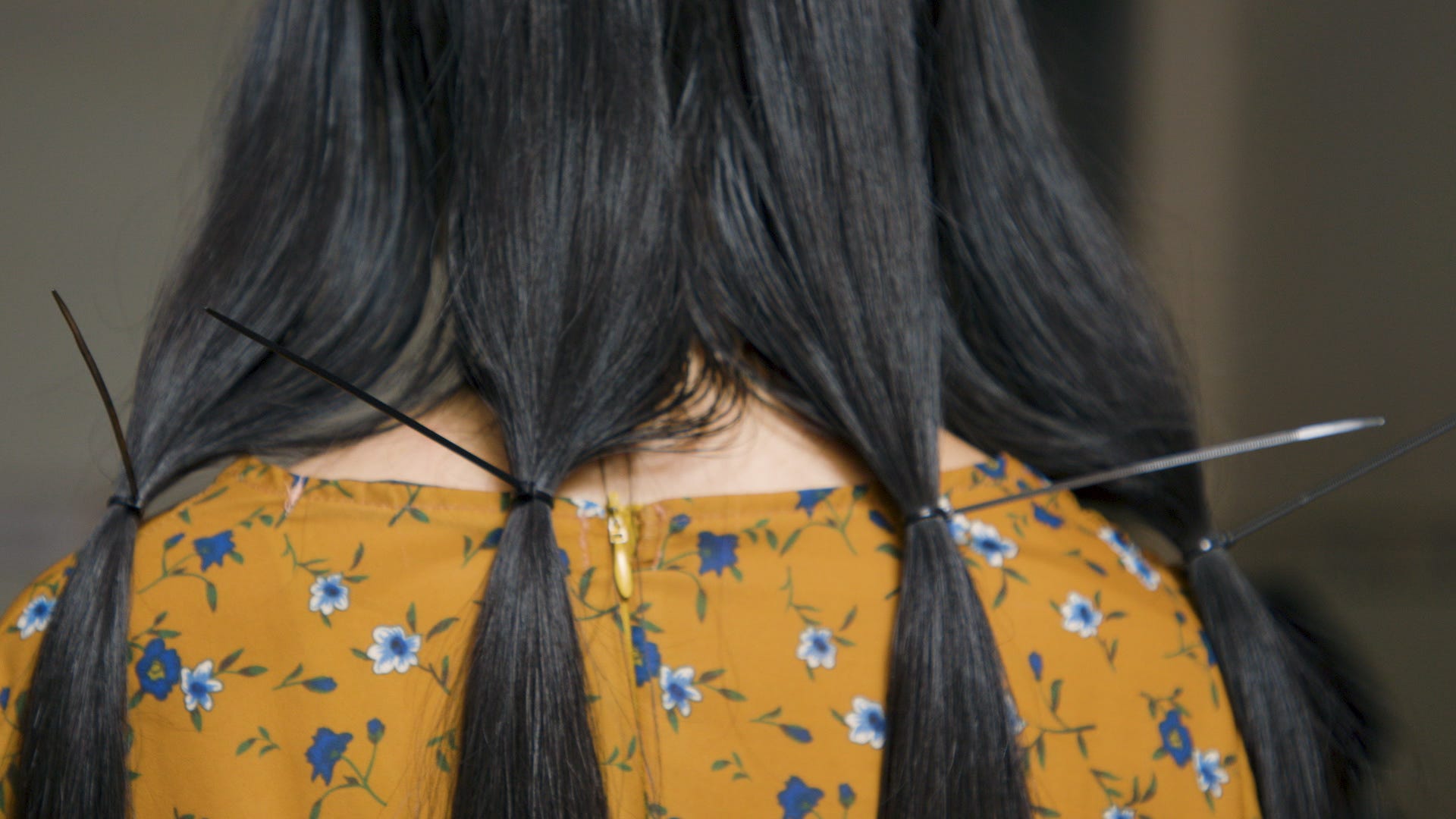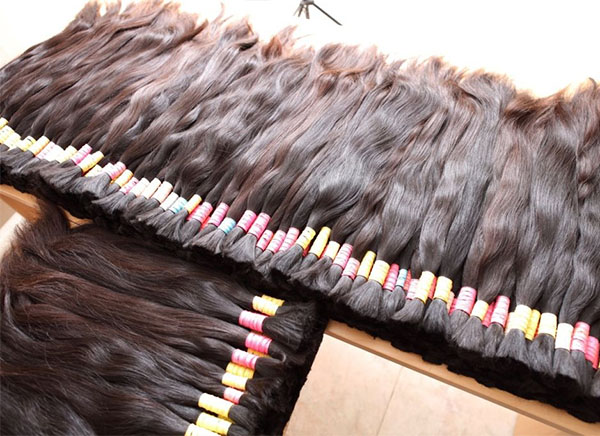Human Rights Concerns in Human Hair Extension Industry: Ethical Challenges Uncovered
When it comes to beauty, the lengths we go to for the perfect look can sometimes overshadow the ethical implications involved. Human hair extensions1, beloved by many for their natural appearance and versatility, come with a hidden cost: exploitation and unfair compensation2 for hair donors. This grim reality not only traps donors in cycles of poverty but also forces us to confront the ethical questions surrounding the sustainability and fairness of the industry. As a professional deeply vested in the beauty industry, I find this issue not only compelling but also essential for anyone involved in the hair extension business to consider.
Are Human Hair Extensions Ethical?
In my years of experience within the hair extension industry, I've often pondered the moral implications of sourcing hair. The allure of human hair extensions—embodying the promise of enhanced beauty—masks a darker side where human rights are brushed aside.
Dive Deeper
The ethical debate surrounding human hair extensions is layered and complex. Many suppliers source hair from economically disadvantaged individuals, offering meager compensation for what can be lucrative gains in the markets of wealthier nations. For example, in countries like India3 and Vietnam, temple hair offerings4—or even hair sold by the impoverished—are often procured at prices far below their market value.
Ethical Sourcing Challenges
- Inadequate Compensation: Hair donors, often young women in dire financial situations, receive pennies on the dollar.
- Lack of Transparency: Many companies fail to disclose sourcing practices, leaving consumers in the dark about ethical concerns.
- Sustainability Concerns: High demand for human hair places pressure on these communities and could lead to exploitative practices.
Given this backdrop, women like Aisha, managing multiple hair extension salons, must navigate these moral waters carefully. Her clients crave top-quality extensions, yet Aisha is mindful about the origins of her products, understanding that her success should not come at the expense of others.
How Are Human Hair Extensions Sourced?
The journey of hair from donor to consumer reflects a process that often lacks fairness and transparency5.
Dive Deeper
Understanding the sourcing of human hair helps us grasp why this industry faces ethical scrutiny. At Plucharm Hair, where I have spent considerable time learning the intricacies of the trade, we focus on transparency5 and ethical sourcing6 as cornerstones of our business ethos.
Key Sourcing Practices
- Temple Donations: In places like Tirupati, India3, hair is donated in religious rituals. However, the fairness of its commercial use raises questions.
- Direct Purchase: Hair is sometimes bought directly from individuals, yet payments can be unjustly low, trapping donors in economic hardship.
- Factory Relationships: Some companies, including Plucharm Hair, aim to ensure fair compensation and community support through more equitable business models.
In striving for fair practices, we aim not only to offer quality products but also to represent our commitment to ethical standards every step of the way.
Are Human Hair Extensions Real Human Hair?
One might question the authenticity of hair extensions marketed as real human hair. Are they genuinely authentic, or are consumers paying premium prices for synthetic substitutes?
Dive Deeper
Yes, most human hair extensions are crafted from genuine human hair. However, the assurance of authenticity can vary drastically between suppliers, and this variance is a gateway for potential ethical lapses.
Types of Hair
- Virgin Hair7: Untreated and considered top-tier, this hair type is often the most ethically challenged due to high demand.
- Remy Hair8: Known for its quality, Remy hair's cuticles are aligned in one direction, reducing tangling.
- Non-Remy Hair9r](https://www.danielalain.com/blogs/articles/difference-between-remy-virgin-and-100-human-hair?srsltid=AfmBOorgmfwTfnYssS1Pc6Rac8GU8BRJAWn5RbHwoC0YaxOpEPBDNVdL)[^8]: This often comprises mixed sources and treatments, thus being less desirable and cheaper.
Here at Plucharm Hair, we focus exclusively on using 100% virgin human hair, ensuring the most natural experience for our customers while adhering to ethical procurement standards.
| Hair Type | Authenticity | Common Ethical Issues |
|---|---|---|
| Virgin | Highly authentic, untreated | Potential unethical sourcing6 |
| Remy | Aligned cuticles, authentic | Mislabeling risks |
| Non-Remy | Mixed sources, less authentic | May include synthetic fibers |
Where Does Most Commercially Used Human Hair Come From?
Commercially used human hair primarily originates from regions where communities are economically depressed but culturally accustomed to hair donation traditions.
Dive Deeper
Major sources of commercially used hair include India3, China10, and Southeast Asia. Each region presents unique stories of people, traditions, and ethical challenges.
Regional Insights
- India3: Temple hair donations are a large source. The ethical challenge lies in making sure proceeds from sales return to the communities that supply the hair.
- China10: As a major production hub, China10 handles significant processing, but transparency5 in sourcing can be lacking.
- Brazil and Peru11: Known for their distinct textures, hair from these regions often commands higher market prices due to rarity and demand.
In each of these countries, ensuring ethical practices is crucial for sustainable business operations. On my visits to our partners in China10’s Shandong Province, I’ve seen firsthand how sourcing integrity positively impacts both producers and consumers.
Conclusion
In examining whether the human hair extension industry is ethical, human rights concerns remain at the forefront. With exploitation and unfair compensation2 rampant, it is critical for brands and consumers alike to demand transparency5 and integrity. As someone entrenched in the industry, I call upon all stakeholders— salons, suppliers, and buyers—to champion ethical practices. This aligns not just with moral standards, but also with the shared goal of sustainable, long-term success.
By choosing to partner with ethically aware companies like Plucharm Hair, salon owners such as Aisha can confidently offer premium products that enhance their brands while standing firm against exploitation. After all, true beauty should never come at the cost of another's dignity.
-
Explore the ethical implications of human hair extensions and understand the hidden costs involved. ↩
-
Learn about the impact of exploitation on hair donors and the importance of fair compensation. ↩ ↩
-
Explore the unique ethical challenges faced in sourcing hair from India. ↩ ↩ ↩ ↩
-
Learn about the cultural significance and ethical issues surrounding temple hair offerings. ↩
-
Understand the significance of transparency in ensuring ethical practices in sourcing. ↩ ↩ ↩ ↩
-
Discover the principles of ethical sourcing and why it matters in the beauty industry. ↩ ↩
-
Understand the characteristics of Virgin Hair and its ethical sourcing challenges. ↩
-
Explore the quality and ethical considerations of Remy Hair in the market. ↩
-
Learn about the sourcing challenges and ethical concerns related to Non-Remy Hair. ↩
-
Learn about China's role in the human hair industry and the transparency issues involved. ↩ ↩ ↩ ↩
-
Discover the distinct characteristics of hair from Brazil and Peru and its market demand. ↩



